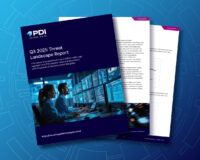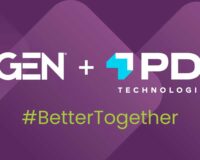
As a convenience store owner and operator, you look for any shortcut, efficiency, and tool to help improve operational performance and save time and resources. Automating invoice data capture is a great method to introduce immediate ROI by eliminating wasted labor on manual back-office tasks, minimizing data discrepancies through standardization, and accelerating access to clean invoice data for more accurate bookkeeping. Ultimately, these benefits lead to sustainable margin protection and growth by aiding you in making data-driven decisions. Here are five ways that automating your invoice data capture optimizes your business.
1. Data standardization
Each invoice carries a trove of important line-item data that informs your inventory counts, purchasing trends, and cash flow management. Capturing this data is a critical step to optimizing efficiency, whether you have one location or many. When an invoice is processed through AP automation, all line-item data should be ingested, standardized, and returned to your back-office system through one integration or electronic daily file. This provides a continuous flow of timely, clean data that you can use to identify pricing discrepancies and keep better track of how money is spent.
2. Elimination of data silos
Managing multiple integrations with file format requirements is already a tedious process, let alone capturing and standardizing the data while maintaining one source of truth for your business. Fragmented data sources create a headache when it comes to reconciliation, adding unnecessary labor with forensic accounting across the variety of ways you can capture the data. There is a way to eliminate the need to set up multiple integrations, and that is by using a dedicated integration source that can receive all invoices across your entire vendor network. This removes silos by populating all standardized invoice line-item data in one convenient location.
3. Accelerated access to clean data for reconciliation
Manual invoice data entry is time-consuming and has a risk of human error. This can erode margins and lead to additional time and resources spent identifying discrepancies on top of the time spent manually inputting each line-item invoice field. Invoice data capture automation reduces time spent on manual data entry and time spent correcting errors by providing clean data to your back-office or accounting system. A single invoice data integration provider can also create a digital invoice “vault” where you can access your history of original and standardized invoice copies at any time, fast-tracking reconciliation.
4. Forecasting using your own data
It’s your invoice data, so you should be able to use it to your advantage. Once your line-item data has been captured, standardized, and stored inside your invoice “vault,” your invoice history accessibility leaves you with a wealth of information to make the right decisions. For example, you can pull data from certain distributors or vendors that will give you accurate purchase data associated with cost, quantity, and packaging that will allow you to have data-driven conversations to protect and grow your margins today and in the future. This cost analysis identifies forecasting opportunities for strategic planning and budgeting and possibly negotiating better discounts on quantity buys for specific products. There is no need to rely on vendor depletion data because you have visibility into accurate purchase data that belongs to you.
5. Data capture to avoid inventory holding costs
Another way data capture solutions can help is by adopting a consignment selling model through scan-based trading (SBT), in which the vendor owns the inventory until the product is sold to the consumer. Through SBT, point-of-sale (POS) data is automatically pulled and shared between the vendor and the retailer. The vendor then submits an invoice to the data integration provider for products sold. This invoice is delivered to the retailer through an integration and sent to the invoice “vault” for approval and payment. This automated data capture of both POS and invoice data creates many benefits. Inventory holding costs are decreased, reconciliation is simplified, and the retailer and vendor together can determine the best products to put on shelves that will sell, creating a decrease in risk for both parties.
Creating inventory and purchasing efficiency with data
Convenience stores have access to lots of data through their invoices. By capturing clean data in an organized system, you can uncover insights that lead to increased cash flow and profitability. Employing cost-effective data capture technologies is the best way to make the most of your own data, putting you in a position to make informed decisions that grow your business.
For more information on automating invoice data capture, visit Fintech here.







